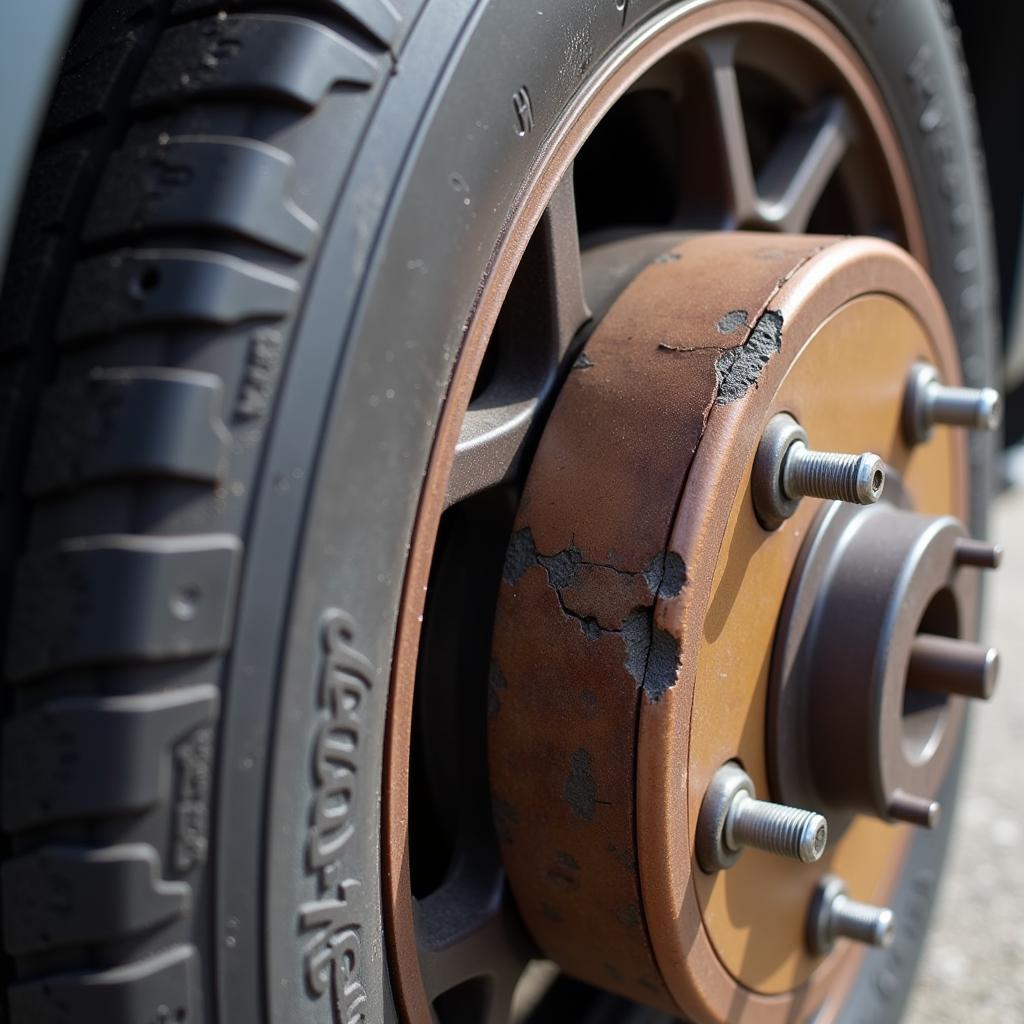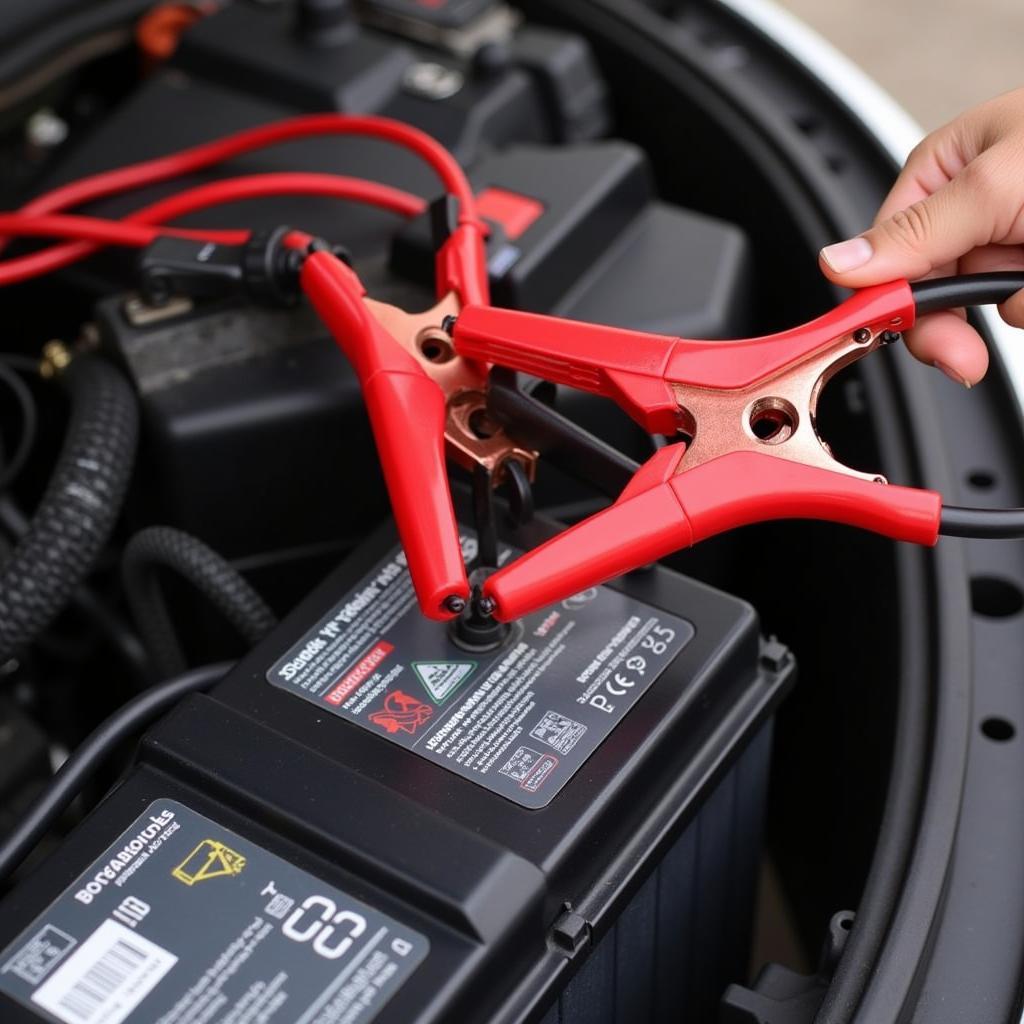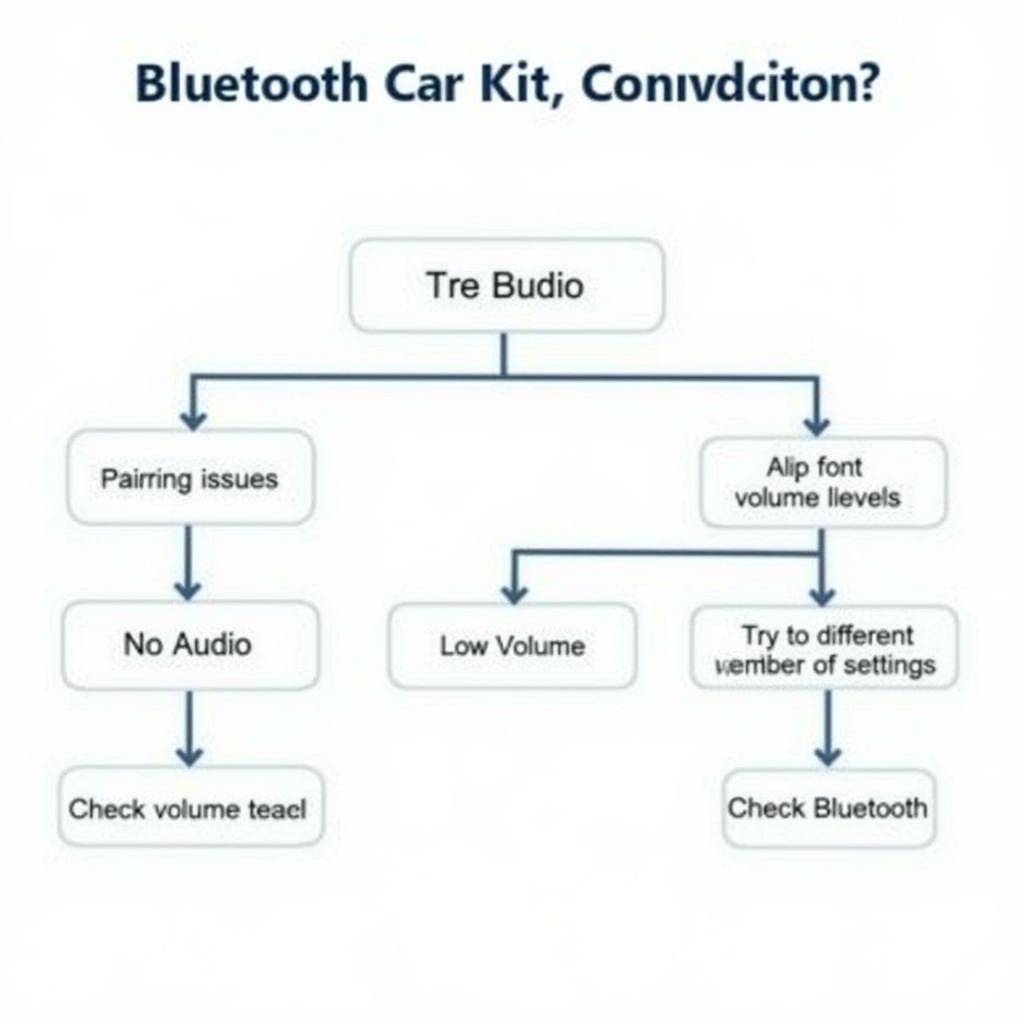The brake fluid level warning indicator illuminating on your Chevrolet Uplander dashboard is a serious issue that should never be ignored. This light signals a potential problem within your braking system, compromising your ability to stop safely. This article delves into the common causes behind a Chevrolet Uplander brake fluid level warning indicator, potential solutions, and essential maintenance advice to keep your vehicle stopping on a dime.
Understanding Your Chevrolet Uplander’s Braking System
Your Chevrolet Uplander utilizes a hydraulic braking system. This system relies on brake fluid, a type of hydraulic fluid, to transmit the force applied to the brake pedal to the wheels, ultimately stopping the vehicle. When you press the brake pedal, the force is amplified by the brake booster and transferred to the master cylinder, pushing brake fluid through the brake lines to the calipers or wheel cylinders at each wheel. This pressure forces the brake pads or shoes against the rotors or drums, generating friction and slowing the vehicle.
A consistent volume of brake fluid is critical for this process to function correctly. If the brake fluid level drops, it indicates a leak or a more serious problem within the braking system.
Common Causes of the Chevrolet Uplander Brake Fluid Level Warning Indicator
Several issues can trigger the brake fluid level warning indicator in your Chevrolet Uplander. Let’s explore some of the most frequent culprits:
1. Worn Brake Pads
The most common reason for the brake fluid level warning light to illuminate is worn brake pads. As brake pads wear down, the brake calipers need to extend further to engage the rotors. This extension requires a larger volume of brake fluid, eventually triggering the warning light.
 Worn Brake Pads on a Chevrolet Uplander
Worn Brake Pads on a Chevrolet Uplander
2. Brake Fluid Leak
A leak in the braking system, whether in the brake lines, hoses, calipers, or wheel cylinders, can lead to a drop in brake fluid level. A visual inspection for leaks around the wheels and under the vehicle is a good starting point.
3. Faulty Master Cylinder
The master cylinder plays a vital role in the braking system, and a malfunctioning one can lead to a drop in brake fluid level. This often manifests with a spongy or soft brake pedal feel.
4. Issues with the Brake Fluid Level Sensor
While less common, a faulty brake fluid level sensor can incorrectly trigger the warning light even if the fluid level is sufficient. A mechanic can diagnose and replace a malfunctioning sensor.
What to Do When Your Chevrolet Uplander Brake Fluid Level Warning Indicator Activates
If the brake fluid level warning indicator comes on in your Chevrolet Uplander, do not ignore it. This warning indicates a potentially dangerous situation that requires immediate attention. Here are the steps you should take:
-
Safely Pull Over: As soon as it is safe, pull your vehicle over to the side of the road or a safe location.
-
Check the Brake Fluid Level: With the engine off, carefully open the hood and locate the brake fluid reservoir. The reservoir is typically located near the firewall on the driver’s side and will have a clearly marked cap.
-
Add Brake Fluid (If Necessary): If the brake fluid level is low, add the correct type of DOT 3 or DOT 4 brake fluid as specified in your owner’s manual. Only use fresh, clean brake fluid from a sealed container.
-
Contact a Mechanic: Even if you add brake fluid and the warning light goes off, it is crucial to contact a qualified mechanic as soon as possible. Driving with a brake fluid leak or other braking system issues is extremely dangerous.
chevrolet uplander brake fluid level warning indicator replacement
Maintaining Your Chevrolet Uplander’s Braking System
Regular maintenance can help prevent brake fluid level issues and ensure optimal braking performance. Here are some maintenance tips for your Chevrolet Uplander’s braking system:
- Regular Brake Inspections: Have your brakes inspected by a qualified mechanic at least once a year or every 12,000 miles.
- Brake Fluid Flush: Brake fluid is hygroscopic, meaning it absorbs moisture over time. This moisture can reduce braking efficiency and cause corrosion within the system. Have your brake fluid flushed every 24,000 miles or as recommended by your owner’s manual.
brake warning lights are what color s
Conclusion
Addressing the Chevrolet Uplander brake fluid level warning indicator promptly is essential for your safety and the longevity of your vehicle. Understanding the potential causes and taking appropriate action can help you avoid a potentially dangerous situation. Remember, regular maintenance and inspections are key to keeping your Chevrolet Uplander’s braking system functioning properly.



